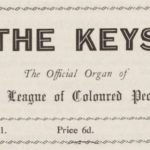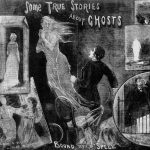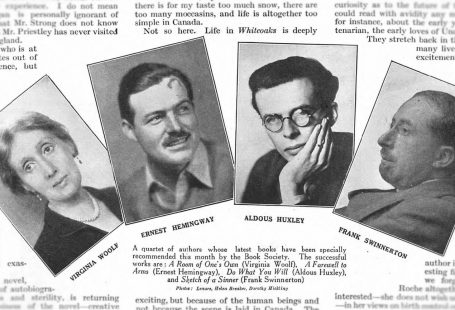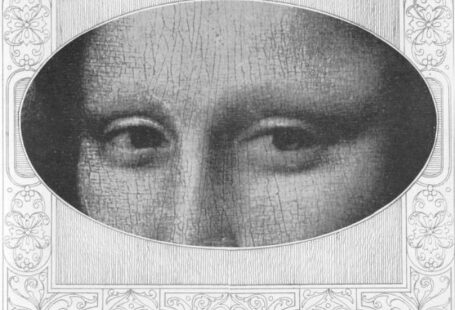This week at The Archive we have added another 51,790 brand new pages to our collection, with one very special new title joining us this week, which helps us to unlock Black British history and beyond. Meanwhile, we have made extensive updates to six of our existing titles.
So read on to discover more about our brand new title of the week, The Keys, our updated titles of the week, and to find out about a very special cricket match which took place in Aberdeen in 1937.
Register now and explore the Archive
Our new title this week is The Keys, which was first published in July 1933 as the ‘Official Organ of the League of Coloured Peoples’ with the aim of addressing the ‘racial misunderstanding’ that was prevalent in society, both in Britain and beyond.
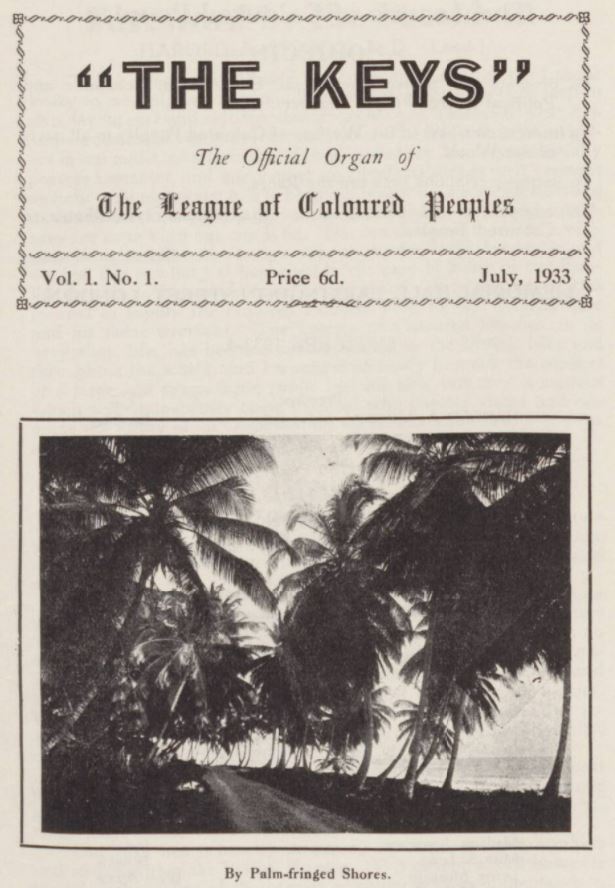
The League of Coloured Peoples (LCP) had been founded some two years before, in the spring of 1931. Its president was Jamaican-born Doctor Harold Moody, who had travelled to Britain in 1904 to study to become a doctor. Having gained his degree, Moody was continually frustrated by the racial discrimination he and other Black British citizens faced, and so, when African-American Harvard history professor Doctor Charles Wesley arrived in Britain in the early 1930s, this was the catalyst for the creation of the LCP, which strove:
To promote and protect the Social, Educational, Economic and Political Interests of its members.
To interest members in the Welfare of Coloured Peoples in all parts of the World.
To improve relations between the Races.
To co-operate and affiliate with organisations sympathetic to the Coloured People.
And by 1933, it was determined that the LCP needed ‘an organ which could be read, and sent to our many friends and well-wishers.’ The Keys was therefore born, with Moody as its editor. Its name was symbolic, as it reference a metaphor popularised by Ghanian educator James Emman Kwegyir Aggrey in the 1920s. He believed that race relations could be compared to the keys of a piano, that both black and white keys ‘must be utilized complementarily in order to achieve harmony.’
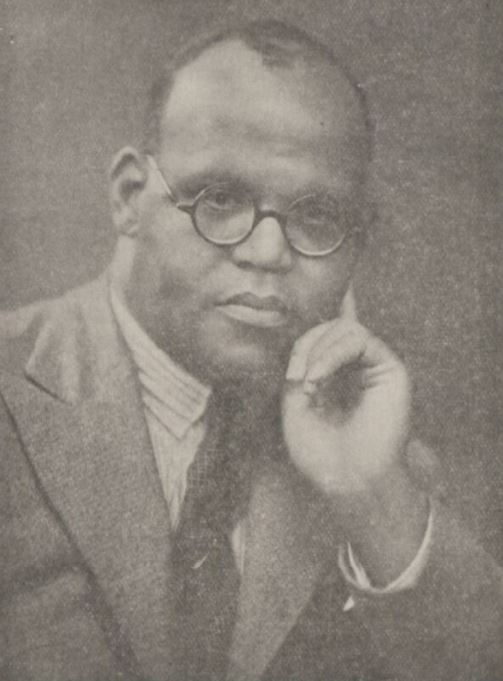
The Keys, therefore, was created from an integrationist philosophy, which aimed to see all races working together to improve society and overcome prejudice. To illustrate this agenda, Moody wrote in his first ever editorial in the journal:
We believe that all races, creeds and colours have their part to play in evolving a new social order and system. All around one sees the need for great co-operation and understanding to attempt some solution to the problem confronting us.
And so, what did the pages of The Keys contain? Costing sixpence, and appearing ever quarter, The Keys contained an important record of what life was like for the Black population of Britain in the 1930s, and described the discrimination to which they were subjected:
On our very doorsteps in Cardiff, London, Liverpool and elsewhere, our brothers and sisters are daily meeting with racial discrimination in their search for work. Medical students, candidates for the nursing profession, and students in various lines of learning have felt the spike heel of racial prejudice, and have often found the door of knowledge barred to them on the ground of colour. Hotels, restaurants, and lodging houses refuse us with impunity.
Instances of racial prejudice were highlighted, such as the barring of Black athletes at Sheffield University. The instances recorded in The Keys went beyond the Black British population, with the journal also highlighting the ‘recent persecution of the Jews in Germany,’ and the ‘tragic plight of the aboriginal in Australia.’
Meanwhile, The Keys contained the latest news regarding the LCP, with photographs of its members, news of its latest outings and ‘Forthcoming Events,’ which included plays and lectures, as well as tennis and garden parties hosted by Doctor Harold Moody. It also featured the latest from the West Indies cricket team, poetry by the likes of Una M. Marson, as well as scholarly essays addressing African-American affairs and ‘anti-colonial struggles across Africa and the African diaspora.’
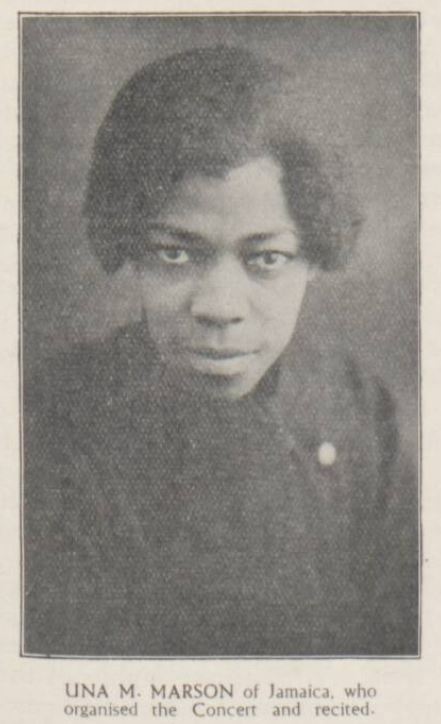
Contributors came from across the world, from the West Indies, Africa, and the United States, with readership of the journal reflecting this. The Keys lasted in its quarterly format until a monthly News Letter was produced. The pioneering Doctor Harold Moody passed away in 1947, and the LCP was dissolved four years later, in 1951.
Please do be aware, that when browsing The Keys, the journal uses some outmoded language relating to race, that we would not use today.
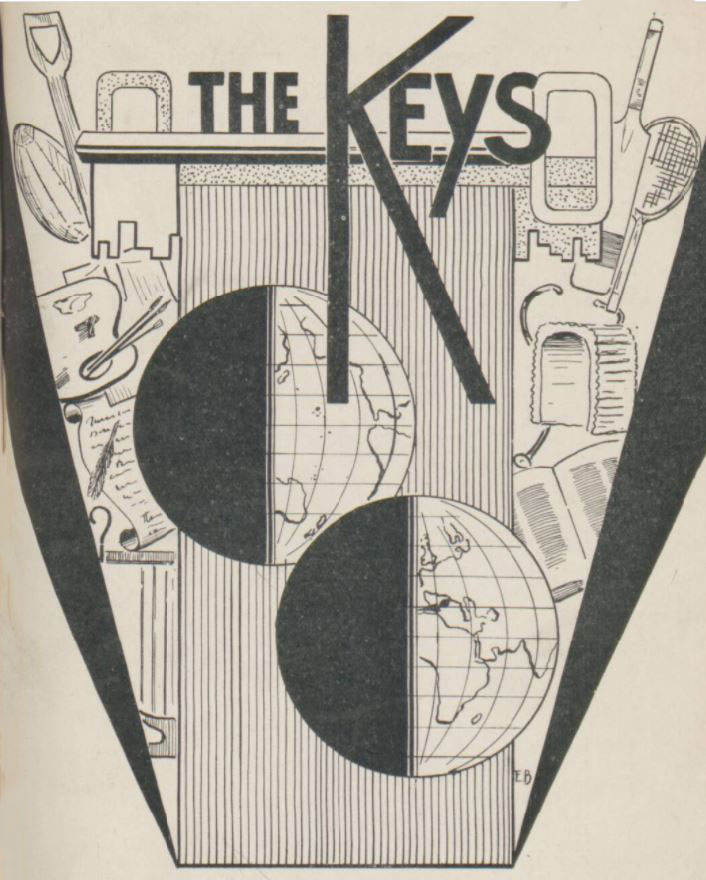
Meanwhile, we have made extensive updates to some of our existing titles this week. We have added over 40,000 pages to London daily the London Evening Standard, which span the years 1871 to 1914. The London Evening Standard was founded nearly 200 years ago in 1827 as The Standard, by businessman Charles Baldwin and editor Doctor Stanley Lees Gifford. By 1860 the newspaper had two editions, the The Standard and the London Evening Standard, with the latter title eventually becoming the only one due to its higher popularity.
Whilst the newspaper was renowned for its foreign news coverage, it did not shy away from controversy. Described as being at times ‘staunchly Conservative,’ it was heavily critical of the Labour party during the 1945 General Election. It was also banned in Germany and Italy during the Second World War, for its unflattering cartoons of Hitler and Mussolini. The London Evening Standard is still published to this day, as a free daily newspaper.
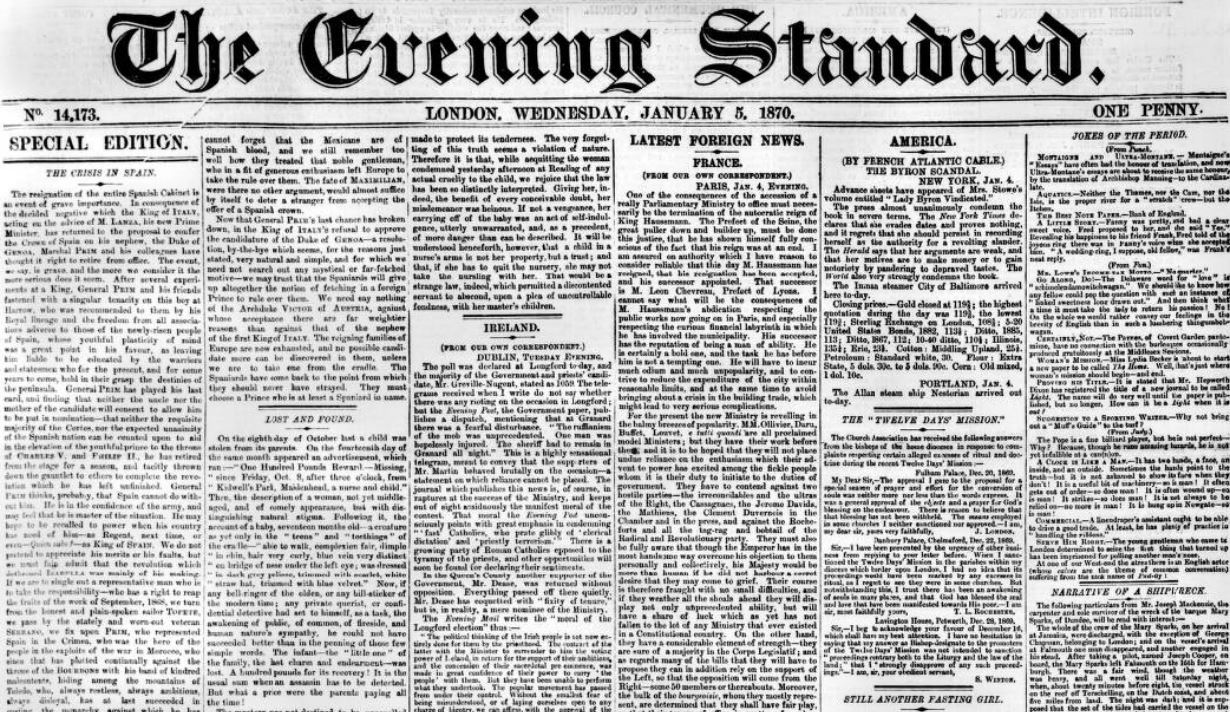
We have also added a significant run of pages to the Daily News (London) this week. The Daily News was founded in 1846 as a Liberal rival to Conservative morning newspapers, such as The Times, and its first editor was none other than Charles Dickens. Dickens, however, stayed in the post for only twenty days, but contributed columns to the newspaper after his departure.
After an uncertain start, the Daily News gradually grew in popularity, helped by the reduction of its price to one penny in 1868. At the end of the nineteenth century it claimed to have ‘the largest circulation of any Liberal paper in the world.’ In 1928 it merged with the Westminster Gazette, whilst in 1930 it merged with the Daily Chronicle, to become the News Chronicle.
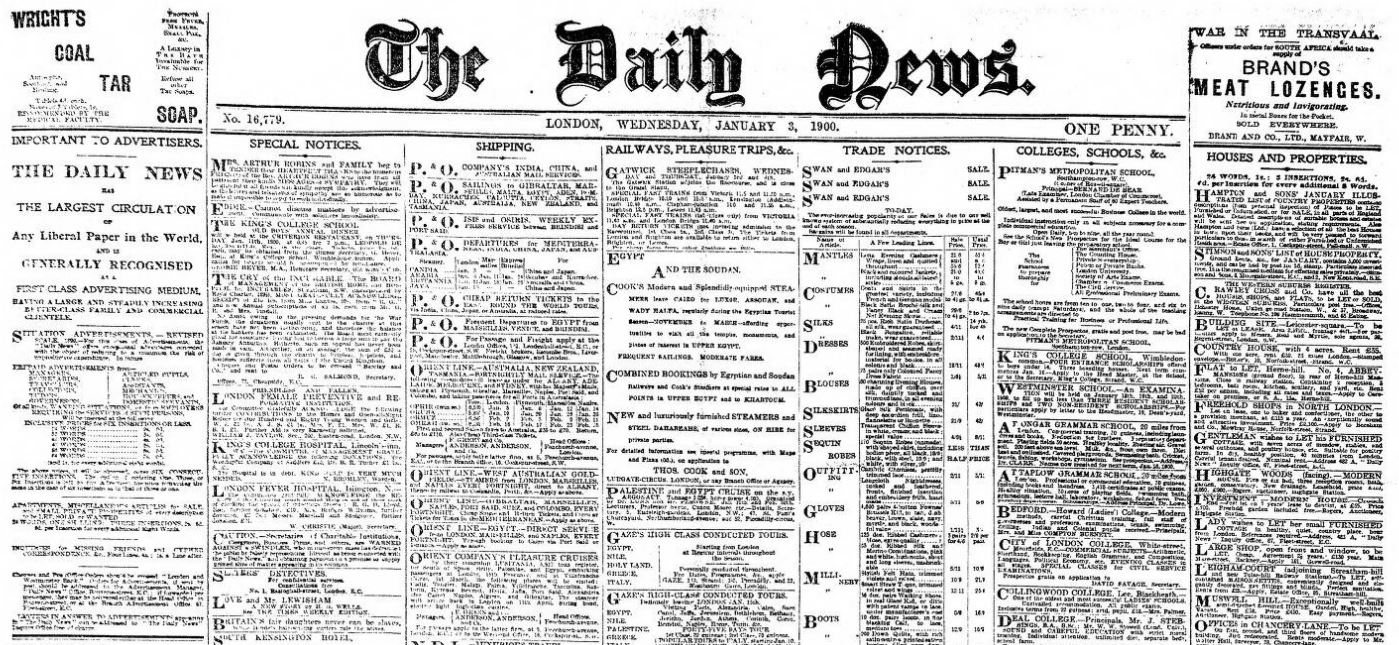
We have also added thousands of pages to Kent’s Faversham News, full details of which can be found at the end of this blog post.
Aberdeen Entertains the League of Coloured Peoples
In 1937, a cricket team representing the League of Coloured Peoples (LCP) travelled to Aberdeen to take on an Aberdeenshire eleven. But what was so significant about this match?
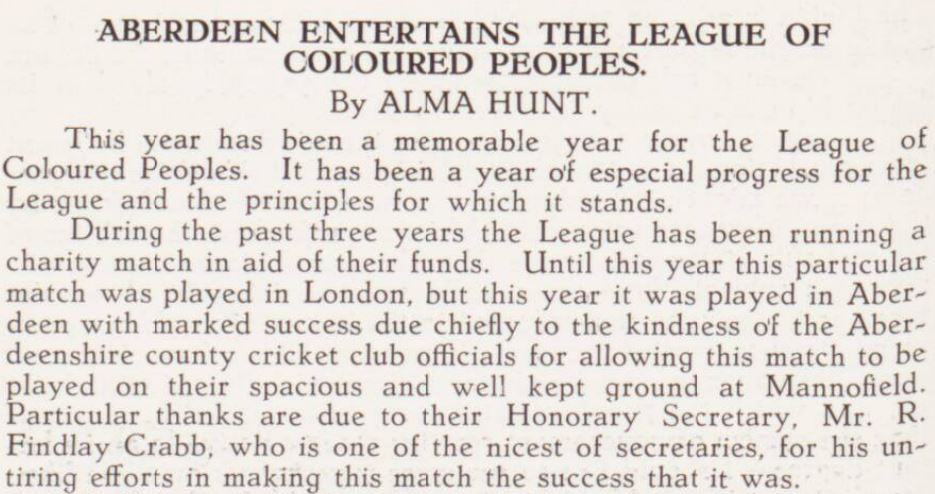
Alma Hunt, the Bermudian and Scottish cricketer, wrote a report on the visit for The Keys in October 1937, in which he explains:
During the past three years the League has been running a charity match in aid of their funds. Until this year this particular match was played in London, but this year it was played in Aberdeen with marked success due chiefly to the kindness of the Aberdeenshire county cricket club officials for allowing this match to played on their spacious and well kept ground at Mannofield.
This was the first time that the LCP and their cricket team had played outside of London, and the reception they received, and the awareness that they were able to raise, made the visit a huge success. However, it did not look like the match would go ahead at first, the sun not shining on the Scottish city and its visitors:
At first there were grave doubts as to whether the match would be played, owing to rain which fell incessantly during the two previous days. But fortunately the weather changed into one of its best moods and the match was played under a canopy of sunshine.
So the match went ahead, and the LCP weren’t just represented by anybody. No, indeed, they were represented by some of the best cricketers of the day, who drew crowds to the ground, as Hunt reports:
From an Aberdeen point of view the match bore particular significance. First because it was the first one of its kind to be played in Aberdeen; second because of the presence of L.N. Constantine, George Headley, E.A. Martindale, Alma Hunt and A. Achong on the League team. A great crowd turned out to see them play.
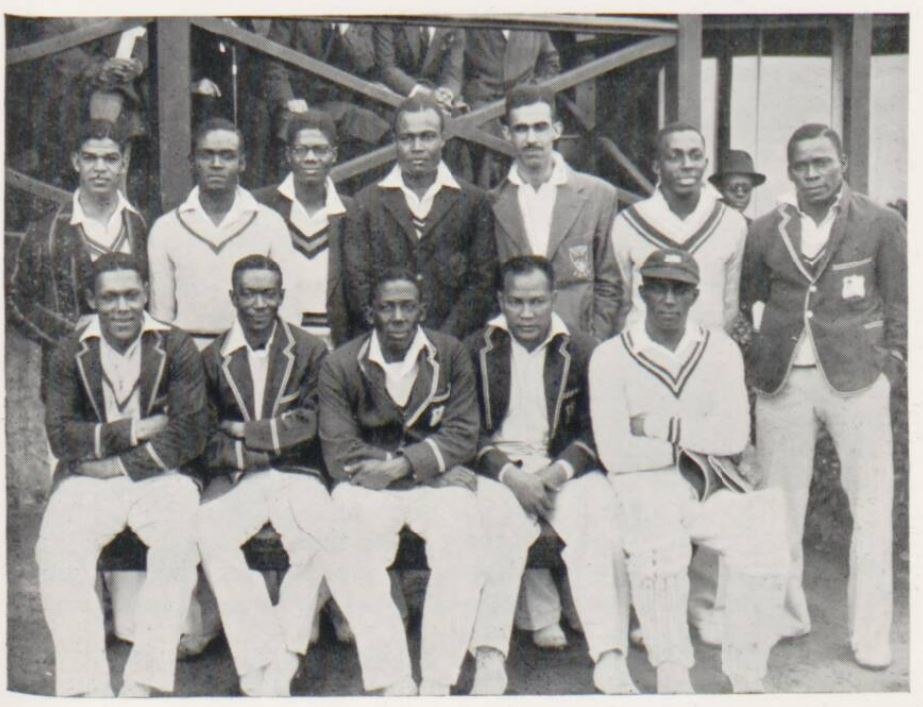
Amongst the team, alongside Hunt, was Learie Constantine, the West Indian cricketer and politician, who campaigned tirelessly against racial injustice, and became the United Kingdom’s first Black peer. He won the toss that day, and put the Aberdeenshire team into bat. Also playing was George Headley, a West Indian batsman who is regarded as one of the best cricketers of all time, E.A. ‘Manny’ Martindale, a West Indian fast bowler, and A. Achong, from Trinidad and Tobago, who was the first person of Chinese descent to play in a test cricket match.
So with the Aberdeenshire team put into bat, what happened next? Hunt writes:
As Martindale took the ball spectators could be seen making themselves comfortable with a view of seeing something thrilling. Nor were they disappointed. In fact Martindale had me regarding his bowling in much the same vein as a ‘school boy’ thriller. Whenever he took the ball the air became fraught with danger and the hand that wielded the willow wilted and went west. He went on to take all ten wickets for 21 runs. Eloquent testimony of a very fine bowling performance, which will be long remembered by those privileged to see it.
Aberdeenshire players A.S. Catto and J.D.H Christie then mounted some resistance, with a partnership of 42 runs, giving them an overall total of 65. The LCP team then came into bat, but they:
…did not make the expected big score. George Headley, ‘the black Bradman,’ received a great ovation as he went out to bat and his appearance was a signal for attention. There was a feeling of great expectancy in the air as this was his first appearance on any ground in the north of Britain, and a large crowd turned out to see this young master. A groan went up when he failed to get a slow one from Littlewood and was stumped.
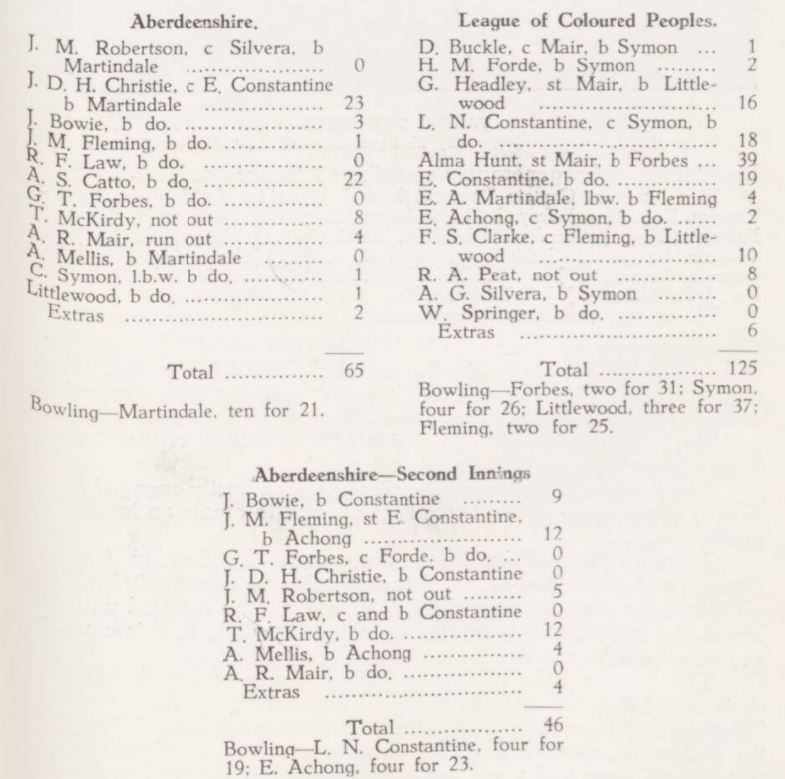
Constantine and Hunt, meanwhile, brought the LCP’s score to 125 all out, but the importance of the day was not in the result of the fixture, but in how the people of Aberdeen received the LCP, and how awareness of their cause was raised. Indeed, Hunt remarked:
The match evoked much interest and the royal way in which the Aberdeen people welcomed the League team and their representatives was a noble gesture and completely the reverse to what one usually hears about the Aberdonians.
After the match, the Lord Provost of Aberdeen entertained the LCP with the city magistrates at dinner at the Town Hall, and remarked how:
…cricket had a great binding force, and [he] expressed great sympathy for the League of Coloured Peoples, whose efforts, he said, were not only of service to them as a race, but to humanity as well.
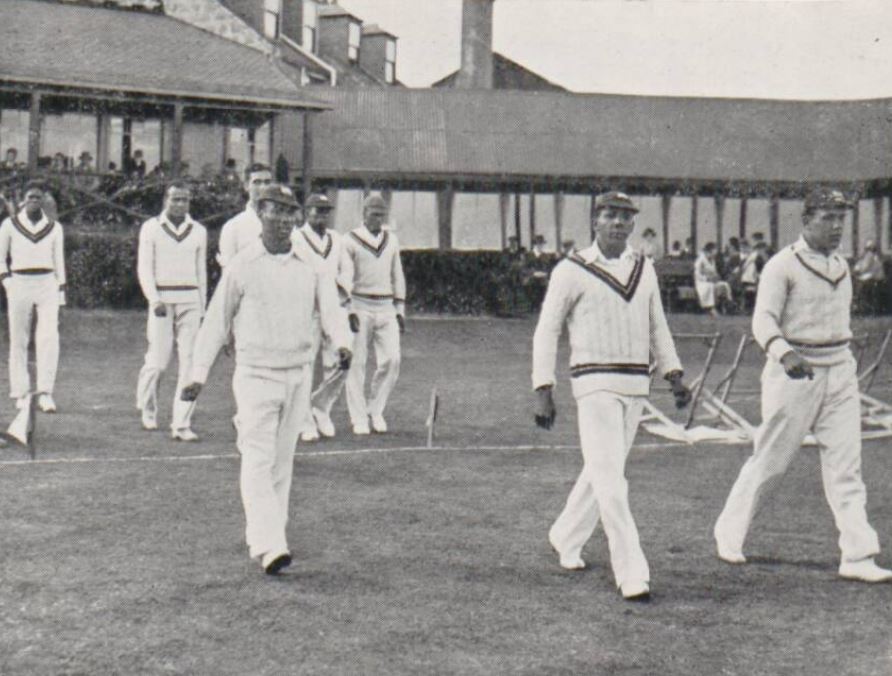
LCP president Harold Moody responded in kind, and stressed how:
…that at no time in the history of the League had they been treated so well, or received such a warm welcome as extended to him and his party by the Aberdeen officials, the Aberdeenshire cricket club and its sporting public.
The LCP then sent a telegram to the King and Queen, who were holidaying at Balmoral, and after dinner the party went on to the Palais de Danse ‘for dancing at the invitation of the management.’ Hunt writes:
Needless to say, this was a fitting climax to a most enjoyable day and evening. Many of the party thoroughly enjoyed their first experience of real Scottish dancing.
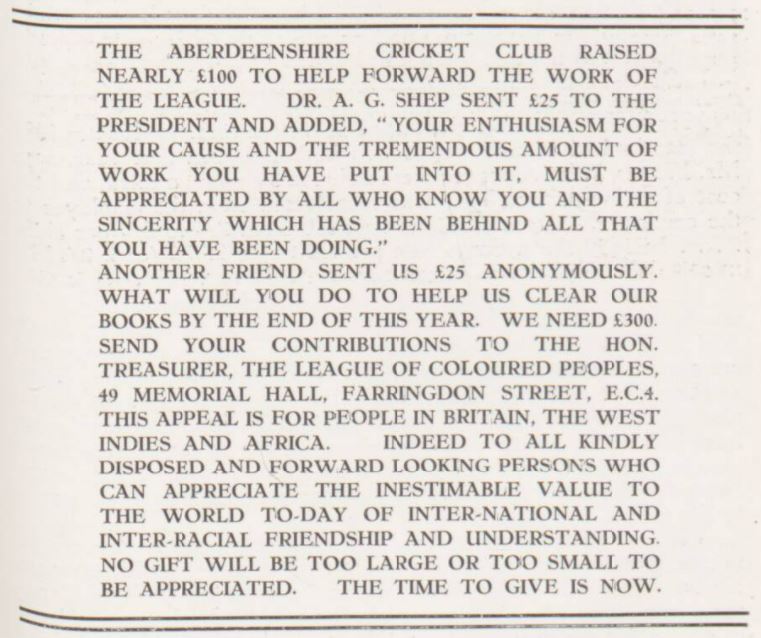
The visit to Aberdeen had been a great success, Alma Hunt surmising the visit which had:
…helped toward the making of new friends, which, coupled with the warm way in which the League was received and entertained, will surely live with the years.
New Titles
Titles |
Years Added |
| The Keys | 1933-1939 |
Updated Titles
This week we have updated six of our existing titles.
You can learn more about each of the titles we add to every week by clicking on their names. On each paper’s title page, you can read a FREE sample issue, learn more about our current holdings, and our plans for digitisation.
Title |
Years Added |
| Cornish Post and Mining News | 1925, 1927 |
| Daily News (London) | 1957-1960 |
| Faversham News | 1949, 1952, 1957, 1959, 1962, 1966, 1973, 1980 |
| London Evening Standard | 1871, 1873, 1875, 1877, 1879-1880, 1882, 1884, 1888, 1890, 1892-1894, 1910-1914 |
| Lynn News & County Press | 1940-1941, 1943-1944 |
| Widnes Examiner | 1910 |
You can keep up to date with all the latest additions by visiting the recently added page. You can even look ahead to see what we’re going to add tomorrow.


